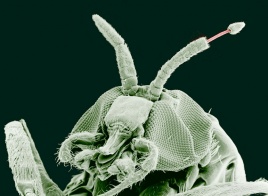Eduardo Caballero y Caballero
- … Caballero published over 180 articles and books?
- … he became a Guggenheim Fellow in 1944?
- … over 15 species have been named in his honor?
- … he was a member of the Biological Institute at La Universidad Nacional de México, and would eventually become the Head of the Zoology Department?
- … shares a birthday with Cleofe Calderon, an Argentine agrostologist also featured in this exhibition?
- 1904 – October 26 – Born in Villahermosa, Tabasco, Mexico
- 1928 – Earns Bachelor of Sciences and Letters from La Escuela Nacional Preparatoria de la Universidad Nacional de México
- 1930 – Publishes first article on the helminthology of Mexico
- 1934 – Earns Master of Biological Sciences from La Escuela Nacional de Medicina y Ciencias Biológicas de la Universidad Nacional de México
- 1938 – Becomes Doctor of Biological Sciences from La Universidad Nacional Autónoma de Mexico
- 1943 – Becomes the Helminthologist of the Oficina Sanitaria Panamerica where he investigated the outbreak of Onchocerciasis
- 1945 – April 10 – Twelve month tenure from the Guggenheim Memorial Foundation begins
- 1946 – January – Named member of the Washington Academy of Sciences
- 1947 – Becomes first professor of Zoology at the Instituto Tecnológico de Mexico
- 1958 – Becomes Head of the Parasitology Department at La Escuela Nacional de Ciencias Biológicas del Instituto Politécnico de la S.E.P.
- 1974 – December 30 – Dies in Mexico City
Eduardo Caballero y Caballero of Mexico was noted for his work in helminthology, or the study of parasitic worms. Over several decades, Caballero studied and published extensively on the subject, both on his own and with several international contributors. He was also very interested in the dissemination of information and teaching. After earning his Master of Sciences, he established courses in invertebrate zoology at the University of Mexico, and would continue to teach there for another 23 years. In 1943 he was appointed the Helminthologist of the Panamerican Office of Sanitation to investigate an outbreak of Onchocerciasis, an infection caused by parasitic worms spread by black fly bites, which can lead to blindness. It was this work in helminthology that would earn him a fellowship from the Guggenheim Memorial Foundation in 1944. Although there were no departments or schools dedicated to the field of helminthology at the start of his education, his work was so prolific that it inspired an interest in the field in his home country, where the Escuela Mexicana de Helmintologia would be established.


